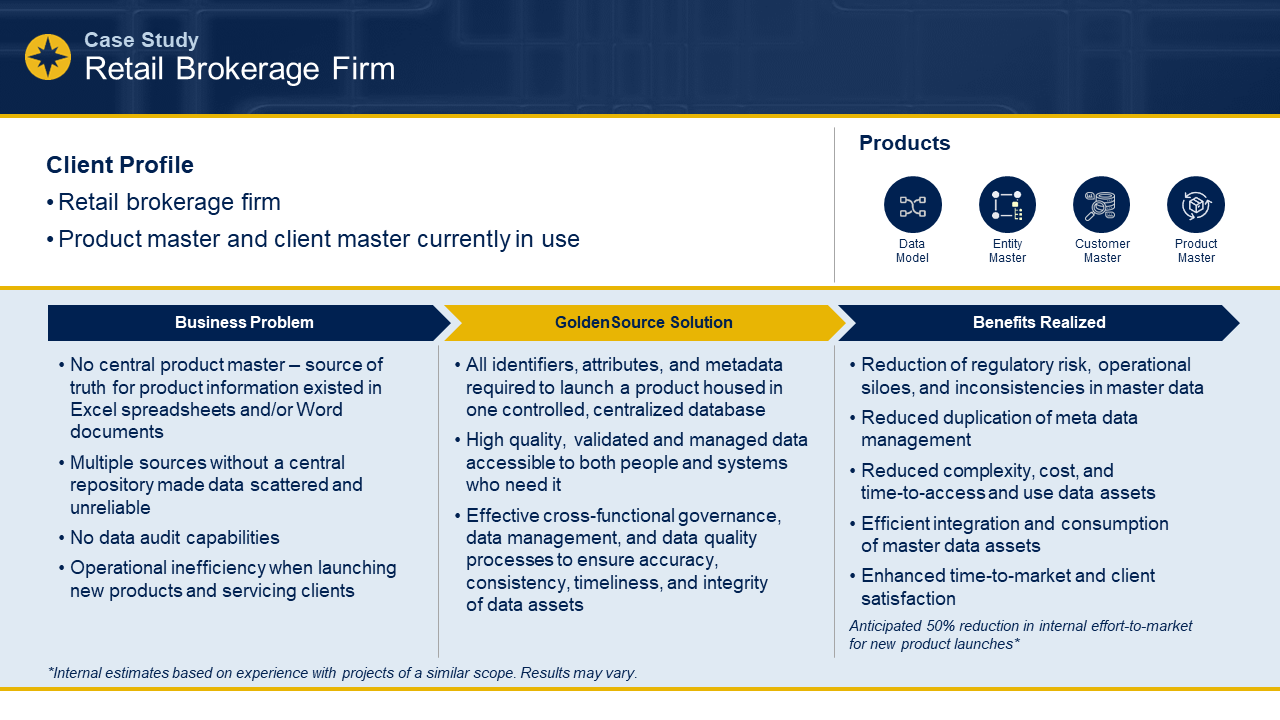Designing the Operating Model for your Product Master
The journey to achieving a successful Product Master in investment management hinges not just on the technology or data involved but critically on the operating model that underpins it. The design of your operating model is a fundamental decision that affects how data is managed, updated, and utilised across the organisation. This article explores key considerations and best practices for designing an effective operating model for your Product Master.
Understanding the Operating Model
An operating model for a Product Master refers to the framework and processes that govern the collection, maintenance, and distribution of product data within an investment management firm. It includes decisions on data governance, roles and responsibilities, and the operational processes that ensure data accuracy, consistency and accessibility.
Key Considerations
Centralised vs. Decentralised Models: The first decision point is whether to adopt a centralised or decentralised approach to data administration. A centralised model pools data management responsibilities within a dedicated team, ensuring consistency and control. In contrast, a decentralised model distributes these responsibilities across different departments, which can enhance responsiveness and specialised knowledge but may risk data inconsistencies.
Data Governance: Effective data governance is crucial, involving setting standards for data quality, access controls, and compliance. This includes defining who can add, modify, or delete data within the Product Master and under what circumstances.
Roles and Responsibilities: Clearly defined roles and responsibilities are essential to avoid overlaps and gaps in data management processes. This includes appointing data stewards, owners, and users, each with specific duties and accountability for the Product Master's data integrity.
Operational Processes: The operating model must outline the processes for updating, validating, and distributing product data. This involves establishing workflows for regular data reviews, updates, and audits to ensure ongoing data accuracy and relevance.
Best Practices
Start with a Clear Strategy: Before deciding on an operating model, have a clear understanding of your firm's data management goals, the regulatory environment, and how the Product Master will serve your strategic needs.
Engage Stakeholders: Involve key stakeholders from across the organisation in the decision-making process. This includes representatives from operations, technology, and business units who will use or contribute to the Product Master.
Invest in Training: Successful implementation requires not just the right model but also ensuring that staff understand their roles within it and are committed to maintaining high data quality standards.
Leverage Technology: Leveraging the right technology (including workflow tools, which we will talk about next week) can support and enhance the chosen operating framework. This includes using data management platforms that facilitate centralised control or support decentralised collaboration, as needed.
Regular Review and Adaptation: The operating model should be reviewed regularly to ensure it continues to meet the firm's needs and adapts to changes in the data landscape.
GoldenSource aids in effective operating model design for implementing a Product Master by providing a comprehensive and flexible data model that ensures consistent and accurate data management. Their solutions streamline data ingestion, validation, and enrichment processes, creating a reliable "golden copy" of data. This centralized approach enhances data governance, integrates seamlessly with existing systems, and supports regulatory compliance by delivering high-quality, transparent data workflows.
GoldenSource's Product Master data management integrates scattered data across various sources into a single, coherent framework. This integration is facilitated through customizable workflows and robust data governance standards, which maintain data integrity and security. By automating data management tasks, GoldenSource reduces manual effort, minimizes errors, and ensures timely data availability, enabling businesses to make informed decisions swiftly
Conclusion
Designing and implementing the right operating model for a Product Master is a complex but essential task. It requires a strategic approach, careful planning, and ongoing commitment to data governance principles. By considering the factors outlined above and adopting best practices, your firm can establish a robust operating model that supports effective product data management that drives your business forward.
Product Master Series
This is the first weekly article in a series focussing on implementing a Product Master. The articles focus on the following topics:
- Scope of the Product Domain
- Product Master Operating Model
- Workflow and Mastering Interaction
- Downstream consumption
- Building a Business Case
Subscribe for email updates on this Product Master series
We will only use your email to send product master series updates unless otherwise agreed.

We listen to your needs

We understand your challenges

We provide solutions

We help with implementation

